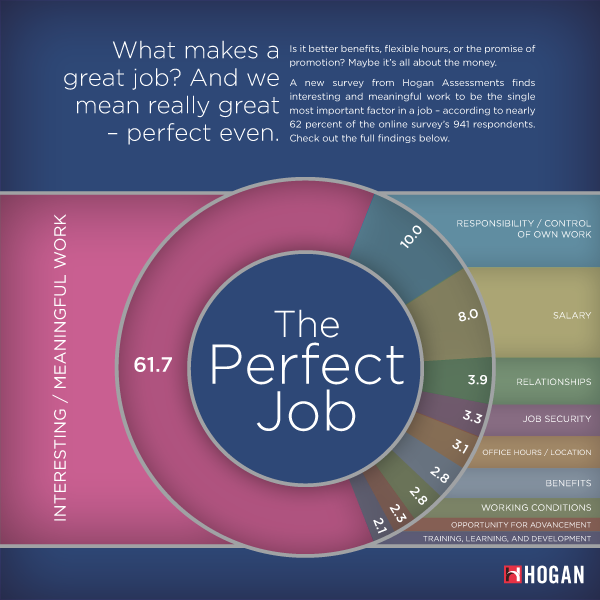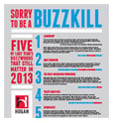 Popular wisdom will have you believe that a leader is someone who exudes confidence and charisma because they appear smart, interesting, and engaging. However, more often than not, these types of leaders wreak havoc on the workplace. A growing body of research suggests that humility is a far more important quality in a leader than charisma.
Popular wisdom will have you believe that a leader is someone who exudes confidence and charisma because they appear smart, interesting, and engaging. However, more often than not, these types of leaders wreak havoc on the workplace. A growing body of research suggests that humility is a far more important quality in a leader than charisma.
Organizations tend to favor people who “seem” leader-like. Individuals who are self-promoting, interesting, and politically savvy tend to get earmarked for promotion. These leaders know what it takes to get ahead and get noticed, and they strategically cater to audiences who can offer them power, influence, status, or access to resources.
Charisma is the elusive quality of being charming, captivating, and pleasant to be around. We are naturally drawn to charismatic people because we feel good in their presence. However, charismatic people also tend to have inflated views of themselves and their skills. They also tend to be more self-promoting than others. Too much charisma can make for ineffective leaders as their tendency to be narcissistic can alienate those working under them.
In essence, charisma is a double-edged sword. Too little and it’s difficult to persuade team members to support your vision. Too much and team members feel unsupported and disengaged. The strong overlap between charisma and narcissism means that it’s easy for charm to turn into arrogance and entitlement.
Humility, on the other hand, is vitally important to creating stability and engagement within teams. One of the most famous studies on the topic analyzes the success of 11 high-performing companies. The leaders in the highest performing firms had two things in common: they were fiercely competitive, yet personally humble.
Humility is a relatively new subject in the context of leadership and organizational effectiveness, primarily because humble leaders typically don’t stand out from the crowd. Preliminary research on the topic shows that a humble leader inspires collaboration and earns the respect of their team members. They also create working environments with higher degrees of satisfaction and productivity. Although the subject is relatively new, there are valid claims for making it measurable. Initial research shows that these skills indicate humility: modesty, sincerity, openness to feedback, recognizing others, low levels of arrogance, and low levels of narcissism.
Mark Carney, governor of the Bank of England, emphasized the importance of humility as an essential attribute of leadership recently. “Good leaders combine personal humility, self-knowledge, and the ability to learn,” says Carney. “That means admitting mistakes, seeking and accepting feedback,and sharing the lessons you have learned.”
There is good news for those who are not naturally humble: research suggests that just by showing signs of humility, overly charismatic leaders can offset the qualities that make them unlikeable. A dose of humility can make a narcissistic boss seem more approachable, supportive, and open to feedback.
“Humility has the ability to counteract the potentially harmful effects of narcissism, which can lead to positive outcomes for the organization,” says Dena Rhodes, Research Consultant for Hogan Assessments. “This suggests that individuals can still have a narcissistic identity and be effective as a leader, as long as they have a humble reputation.”
The good news is that even the most arrogant of leaders can increase their effectiveness by showing humility, even if it’s not entirely genuine. Here are a few tips for avoiding the pitfalls of charisma:
- Put the spotlight on others: make a concerted effort to recognize the achievements of team members and subordinates
- Increase self-awareness: actively try to understand your limitations and show a willingness to acknowledge your mistakes
- Be open to feedback: a trademark of humility is being coachable, which means opening yourself up to criticism and accepting that your way is not the only way
- Check your sense of entitlement: work to earn the respect of your colleagues, don’t automatically assume you are entitled to it
- Monitor your self-promoting behaviors: focus on trying to get along rather than getting ahead


 Talk of personal branding on social platforms is rampant. Rarely, however is there mention of how a personal brand can affect engagement at work.
Talk of personal branding on social platforms is rampant. Rarely, however is there mention of how a personal brand can affect engagement at work.
 Talk of personal branding on social platforms is rampant. Rarely, however is there mention of how a personal brand can affect engagement at work.
Talk of personal branding on social platforms is rampant. Rarely, however is there mention of how a personal brand can affect engagement at work.



